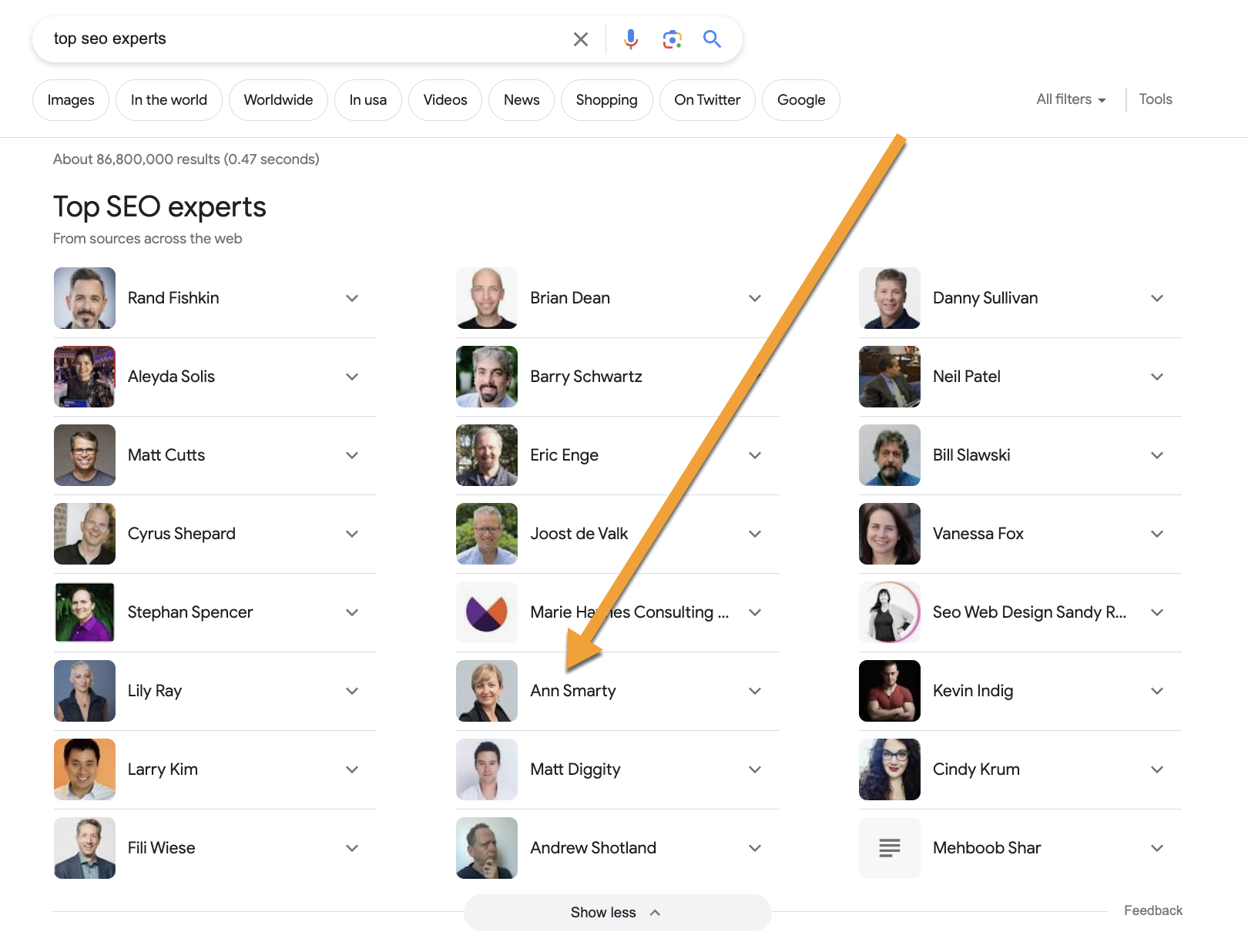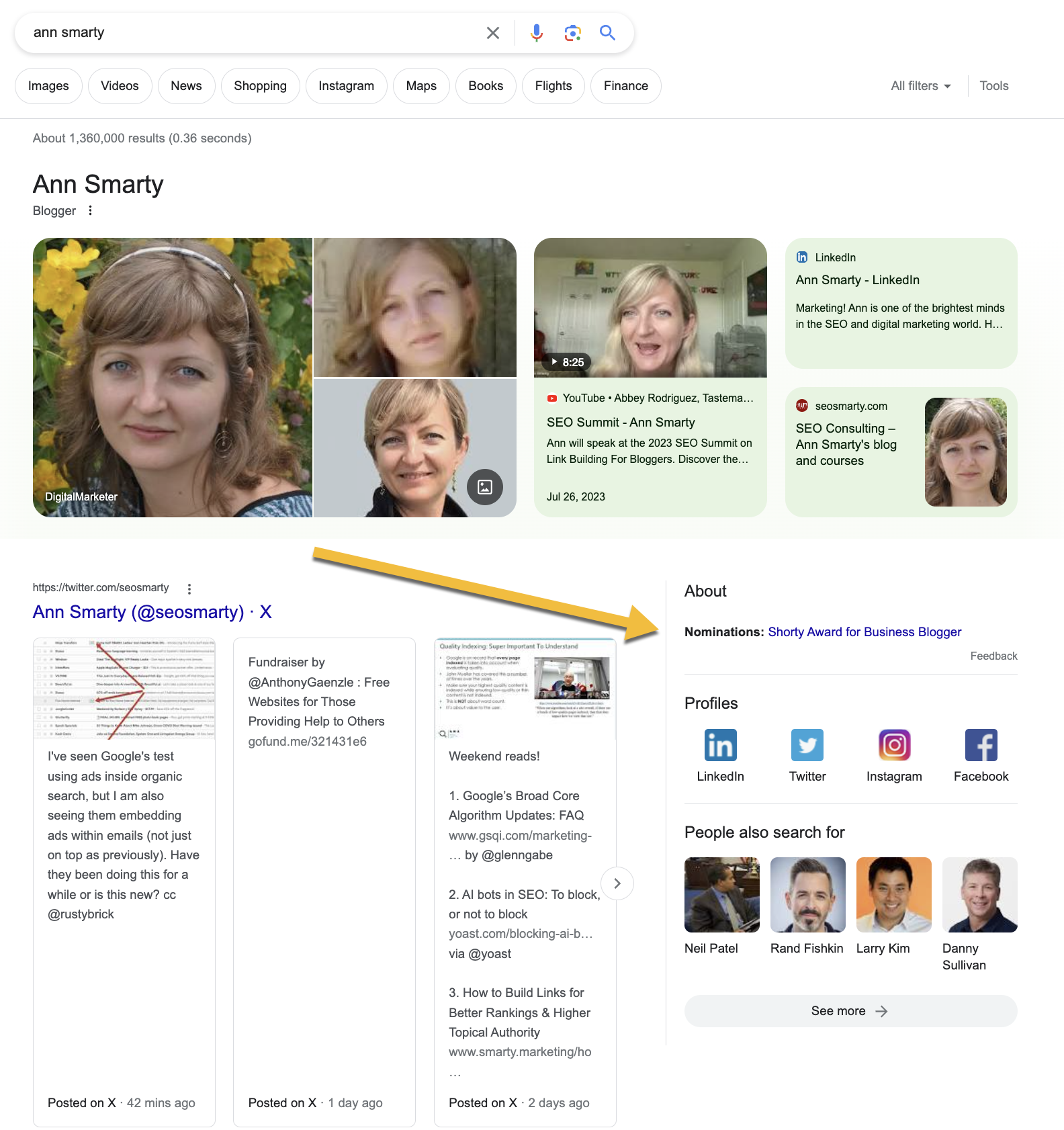Person schema helps Google understand your expertise, and identify the other channels you are writing for or managing.
Person schema is a good way to support E-E-A-T “Experience, Expertise, Authoritativeness and Trustworthiness” of your content. Person schema may also help you trigger a Knowledge Panel in search results, or control what it includes. Using schema is not the only signal Google considers when deciding which brand-driven searches need to trigger a Knowledge Panel but it may be a contributing factor.

Being included in the knowledge graph also means appearing in related searches (and potentially SGE answers).

When to use Person schema?
-
Use Person schema to help Google identify an author (or several co-authors) of an article. This is an officially supported schema type to claim authorship. Every article by the same author needs to include the “Article” schema linking to that author’s profile page which has a detailed Person schema.
-
Use Person schema to tell Google how you are connected to a company. This could be “Founder”, “CEO”, etc.
Where to use Person schema?
-
To claim authorship, include the Person schema on the author’s profile page linking to all or recently written articles by this person.
-
When claiming your connection to a company, include the Person schema on your “About” page
Person schema best practices:
-
Include your areas of expertise (knowsAbout)
-
Include your other columns in the “sameAs” section. If you are writing for reputable publications, this is where you can show Google you are the same author. This may help Google assign authoritativeness signals to your authorship.
-
If you authored a book, include your Amazon profile in the “sameAs” section. This will help Google understand you are an established expert on a topic
-
Include your actively maintained social media profiles in the “sameAs” section. This will help Google include the correct profiles in your Knowledge panel.
Overall:
-
Google uses structured data markup (schema) to better understand the content, meaning, and expertise/authority/trustworthiness (E-A-T) of web pages.
-
Structured data provides explicit clues to Google about the relationships between entities on a page.
This helps Google in several ways:
-
Reduces ambiguity between entities by clearly defining the relationships between them.
-
Allows Google to make new connections between entities that it wouldn't have made otherwise without the structured data.
-
Provides additional descriptive information about entities that Google may not have had without structured data markup.
Overall, structured data allows Google to better grasp the E-E-A-T of pages, sites, and entities by clarifying relationships and providing extra entity information. This improves Google's knowledge graph and ultimately helps them provide higher quality search results.
Implementing structured data is beneficial for SEO when done properly, as it helps Google understand and represent your content more accurately.